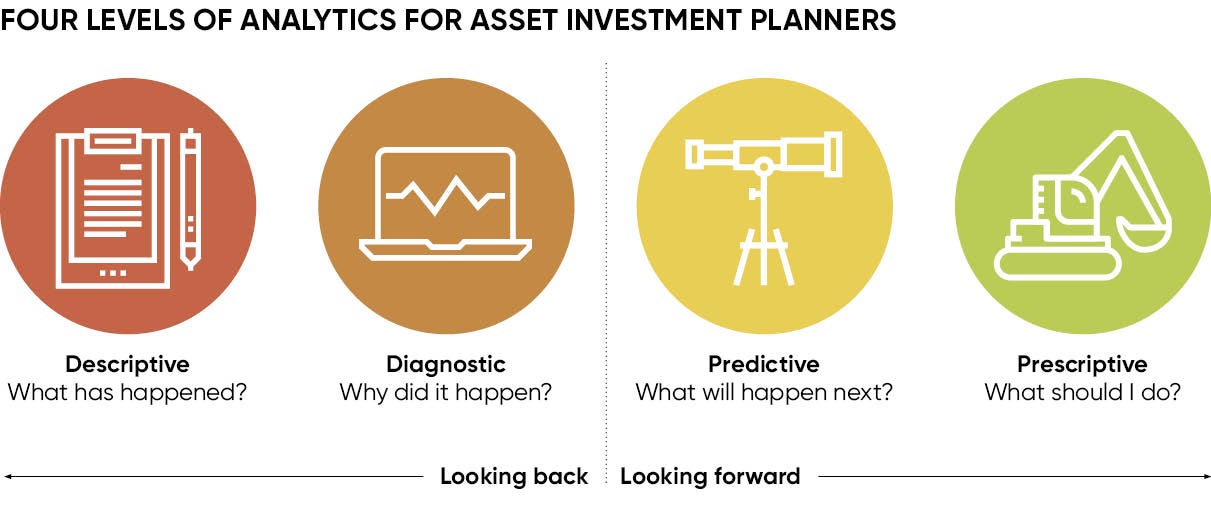 The world invests around $2.5 trillion a year in key infrastructure systems for transportation, power, water and telecoms. However, that total is simply nowhere near enough.
The world invests around $2.5 trillion a year in key infrastructure systems for transportation, power, water and telecoms. However, that total is simply nowhere near enough.
This stark assessment was one of the findings of the report Bridging Global Infrastructure Gaps, published last year by McKinsey. The numbers make for a sobering reality check. Forecasts from 2016 to 2030 suggest the annual figure needs to be more like $3.3 trillion, to support expected rates of growth. Continuing “business as usual” will therefore result in cumulative underinvestment on a grand scale. The shortfall means we will end up needing to find an extra $350 trillion a year to bridge the gap.
For the physical assets concerned and those tasked with their management, the scenario unfolding amounts to almost a perfect storm, says John Phillips, chairman of SEAMS: “For many countries and utilities, infrastructure is at a tipping point. Under intense pressure, it is ageing rapidly with deterioration exacerbated by new and worsening factors, ranging from increased wheel loads, to extreme weather. Yet, that same infrastructure is simultaneously being asked to deliver improved levels of service and enhanced customer satisfaction.”
Clearly a new approach is needed: the question is what? As a leader in prescriptive analytics, SEAMS is focused purely on asset management and helping business meet the infrastructure challenge ahead. According to Mr Phillips, though, many asset managers are finding themselves worryingly short of answers.
He says: “It is going to become increasingly important to bridge the growing infrastructure gap between investment and maintenance, to achieve delivery against regulatory key performance indicators, business objectives, stakeholder demands and ultimately save money. With the clock ticking, however, organisations are struggling to produce evidence-based near and long-term investment plans.”
Optimising infrastructure portfolios means evaluating spend across all permutations of investment, weighing the relative merits of adding new capacity against those of upgrading existing assets, balancing the competing claims of capital and operating expenditure, risk and investor returns.
In short, you need a plan. This is where prescriptive analytics and decision support tools come in.
Gartner, a leading global information technology research company, has forecast prescriptive analytics will become the fastest growing software application internationally, with use rising from 10 to 35 per cent between 2016 and 2020. What prescriptive analytics does is take information derived from data and use it to identify specific actions to achieve strategic goals.
Developing true decision-making power calls for analytics that can integrate intelligence about the past, present and future, enabling a business to move from hindsight, via insight, to foresight. This requires decision support tools (DSTs) in the form of four kinds of analytics: descriptive, to know what has happened, historically; diagnostic, to understand why it happened; predictive, to learn what will happen next; and prescriptive, to know what to do about it.
As a discipline, analytics is a complex combination of mathematics and statistics, data techniques and advanced algorithms, with rich visualisation to communicate insight. As a DST, however, prescriptive analytics is designed to answer the tough, straight questions asked in business.
Knowing what is going to happen is not the same as doing something about it. So to transition from predictive to prescriptive analytics, the SEAMS Enterprise Decision Analytics (EDA) software adds modelling into the optimisation mix, to help get some real-world answers.

While analytics for assets might express the outputs of data analysis in terms of deterioration rates, or curves, modelling takes matters a step further. Used to explore the outcomes of different courses of action, models can be created to answer specific sets of questions, such as when to replace plant or how much maintenance is needed.
Modelling can be undertaken either on a project portfolio basis and/or an individual asset level. The SEAMS EDA approach enables both, offering significant business benefits. Mr Phillips explains: “Organisations need to be able to analyse not just which projects are needed for investment, but the individual performance of assets too. This allows management to shift gears between the strategic ten-year vision, an operational annual approach and tactical daily delivery.”
Originally formed at the request of the UK water industry, SEAMS was born out of ten years of research and development at Sheffield University and Exeter University, with its analytics software commercialised in 2002. Since then SEAMS has diversified its offering, supporting more than £200 billion in investment decisions worldwide and developing analytics solutions for FTSE 100 companies. With a typical range of efficiencies between 7 and 17 per cent, clients include the likes of Yorkshire Water, Severn Trent Water, National Grid and E-ON, plus London Underground and Highways England.
Developing true decision-making power calls for analytics that can integrate intelligence about the past, present and future
In the case of Yorkshire Water, 2016 saw SEAMS appointed as lead of a consortium with AECOM, Sweco, AMCL and CGI to enhance its asset management processes and support systems. A tailored decision making framework was created using the SEAMS EDA software to monitor performance of the multi-million-pound network of underground pipes and treatment infrastructure.
As climate risk and resource scarcity begin to impact economic development, plus urbanisation and population growth intensify demand, sustainability and resilience are increasingly important concerns for infrastructure. As a result, incorporation of additional, often non-financial, metrics into decision-making calls for application of more holistic analytics. Increasing customer expectation, affordability challenges and stiffening regulation are also all contributing factors.
In response, therefore, Yorkshire Water is looking for a broader basket of valuation methods to support best-practice decision-making, helping reduce cost, increase profit and balance risk, so improving corporate performance and return on investment. This has meant adopting the Five Capitals methodology for assessing impacts, thinking not just in terms of financial and manufactured capital, but also natural, human and social capital.
Given such decision-making sophistication, the whole-life-cost view of assets provided by prescriptive analytics represents a perfect fit for joined-up C-suite thinking. Mr Phillips concludes: “Ultimately, empowering the main board of a major utility to adopt more sustainable investment scenarios and achieve smarter asset management still begins at entry and collection level with the data. Culture change must be systemic throughout the business, people and process, as only then can an organisation successfully build the necessary analytic capability with a bias for action.”
For more information please visit www.seamsltd.com


